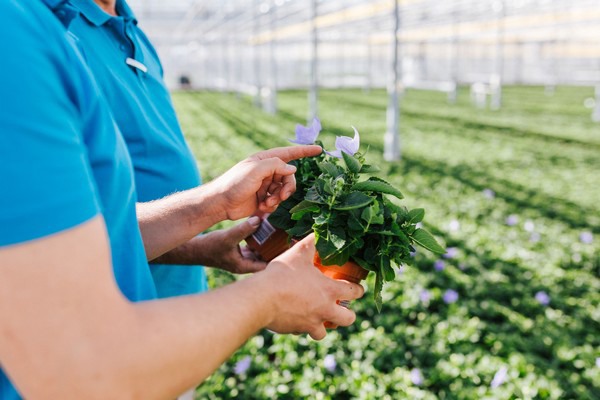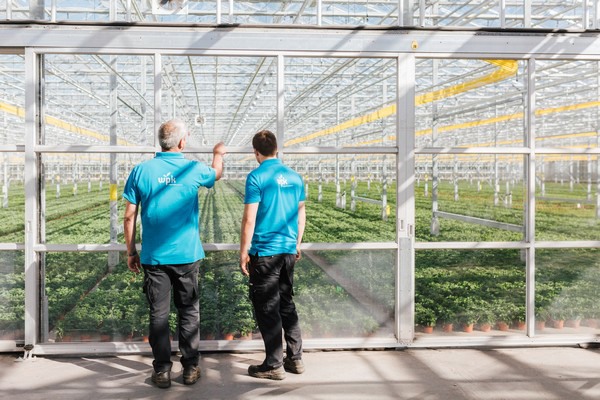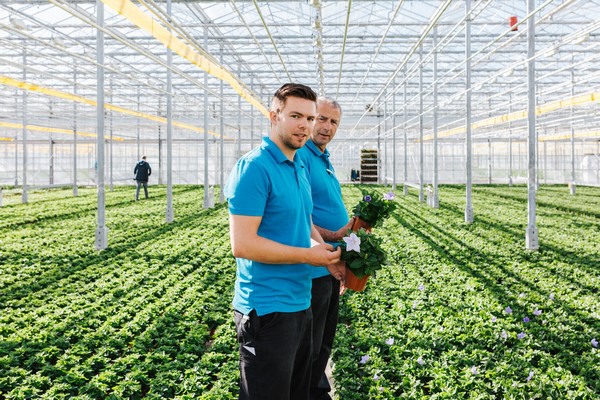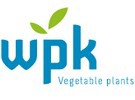Imagine being so flexible that you grow what the market is demanding at that moment. While not impossible, it surely sounds quite complex. But this is not a problem for the Dutch propagator WPK. "Right now, we have young ornamental plants in the greenhouse," Dianto van der Lugt, cultivation specialist at WPK, says. "But in total, we have three different segments: warm vegetable plants and cold vegetable plants, and flowers, of course." Having this broad offer allows WPK to have products ready year-round, meeting not only customers' demand for high-quality vegetable plants but also providing flowering potted plants and young ornamental plants for the most flower-intense holidays. "For instance, we grow tomatoes, peppers, cucumbers, eggplants, and melon plants for our warm vegetables segment; on the other hand, we have cauliflower and several cabbages such as red, white, and Chinese cabbage, as well as Brussels sprouts and kohlrabi for our cold vegetable plants segment. Regarding the potted plant variety, we grow Celosia, Platycodon, Callistephus, and Aster," he points out.
Attention to details
Such a thing wouldn't be possible if it weren't for WPK's high-tech greenhouse. "We have a concrete floor and carry out ebb and flow irrigation," Dianto continues. "On top of that, we utilize supplemental hybrid lighting, as well as a double screen: one for energy saving, the other for light distribution." Yet, the top priority is hygiene, especially considering the Tomato Brown Rugose Virus currently going around in the industry. "We are obsessed with hygiene," he points out. "We can't allow anything to be left to chance." The greenhouse is divided into different sections according to the season and the crop, yet walking through them requires extra steps. "Everybody getting into the facility needs to change their clothes," he says. "You can't just go from one department to another without disinfection or sanitation."

Yet, keeping pests and pathogens at bay is not the biggest challenge for WPK. "Light is definitely one of the biggest challenges we have here, especially when it comes to our flowers and pot plants," Jos Zwinkels, cultivation specialist at WPK, continues. The thing with light is that flowers and pot plants need to be trained to withstand different light levels when they end up at customers' houses. To do that, WPK has to take care of a few things. "We start training them at the start of the season," says he. "Initially, we give them enough light, but not too much. Then, gradually, we increase it so that, say, by Valentine's or Mother's Day, our pot plants and flowers are ready to withstand new environments."
The importance of the lighting system
Because finding the balance with the lighting system is so challenging, it is also quite tough to select the right one. "We are still doing some trials," says he. "But we have already seen that under LEDs, we are getting very promising results. This is mainly because of the spectrum, which provides plants with the exact amount of light they need. Leaves usually get too dark if they get too much light, as they fill up with sugars, but we haven't had any of that yet." On top of LEDs' light efficiency, there is also their energy efficiency. "When we put the screens down, in the evenings, there might be the danger that the supplemental lighting causes too high humidity in the greenhouse due to the increased heat. This doesn't happen with LEDs, allowing us not only to save on our electricity bill but to also get double the amount of light for the same energy input."

Because those aspects are key when selecting the lighting supplier, Dianto and Jos at WPK have chosen Fluence. "We selected Fluence as a lighting supplier because of the quality spectrum of their lights. The broad white spectrum allows us to grow every crop without problems efficiently. Not all crops like a more pink or even purple LED lighting solution. The Fluence white spectrum guarantees the best solution for the wide variety of crops we grow and propagate," he says. "While the quality of Fluence's lights speaks for itself, what helped us a lot has also been the constant horticultural support they provide us. Their horticultural team comes to the facility every week and checks how things are going and if it's necessary to do anything."

Dealing with the energy crisis
Relying on such a partner can be potentially critical in these times of energy crisis and uncertainty. "Everything changes so much every day," Jos says. "With regards to the energy crisis, we have to learn as we go. We have solar panels installed on the roof, but that's not enough for us, so we also resort to some gas. At the same time, unlike many growers, we never stop. If energy prices are too high, one can just wait a little longer and plant when there's more light or when it's warmer. We produce year-round, and while it can get quite intense, our flexibility is our unique selling point. We go to extreme lengths for our customers, whatever it takes."
For more information:
WPK
Schanseind 19, 4921 PM
+31 162-673360
wpk.nl

